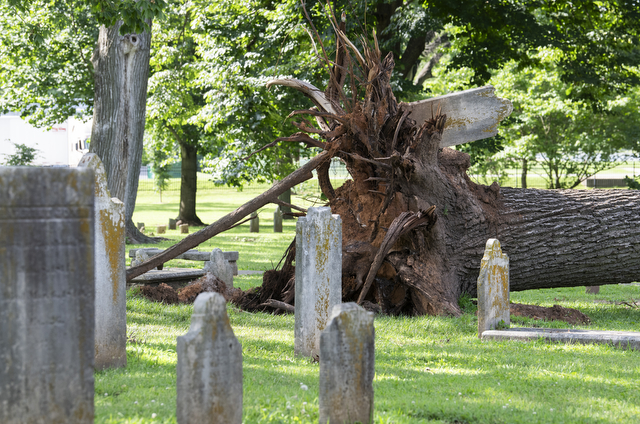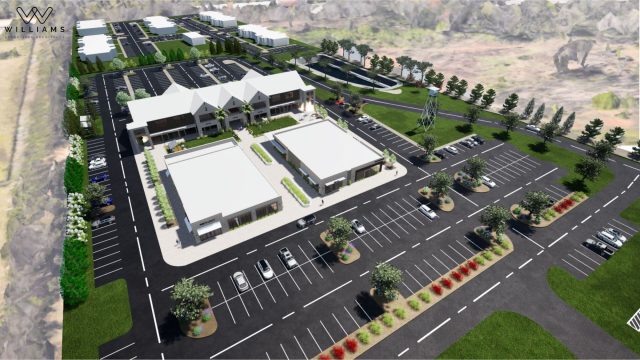BGMU water quality remains safe, new report says
Published 6:00 pm Saturday, July 13, 2019

- Bowling Green Municipal Utilities pumps water from the Barren River through the utility's water treatment plant and into a storage tank, like the Reservoir Hill water tower shown above.
Bowling Green Municipal Utilities maintained clean drinking water in 2018, according to the utility’s latest Water Quality Report.
Doug Kimbler, superintendent of BGMU’s treatment plants, suggested there is annual variability in water-quality indicators, but there were no surprises last year.
“I think the report shows that everything was running like it should,” Kimbler said. “We had no violations, which is what the public has come to expect.”
BGMU pulls drinking water from Barren River, which connects to the Barren River Reservoir and Drakes Creek within its area of raw water intake.
Sediment, nutrients, bacteria and toxic substances, such as oil, pesticides and litter, affect watersheds. These contaminants enter the water supply from point sources such as an outflow from a pipe, tunnel or concentrated animal-feeding operation, as well as non-point sources such as agricultural runoff, groundwater, roads, urban areas and even the atmosphere.
Treatment plants can remove most of these contaminants. But the more that water needs to be treated, the more disinfectants have to be used. Heavy chlorination can lead to high haloacetic acids and trihalomethanes, which are potentially carcinogenic, according to the National Institutes of Health’s National Toxicology Program.
In 2018, the utility recorded haloacetic levels of 55.6 parts per billion – which is higher than usual but under the action level of 60 ppb.
“What we do is walk a very fine line,” Kimbler said. “We need enough chlorine to take care of the bacteria from the river, but then be careful not to add too much to have as many haloacetic acids as necessary.”
This is a common issue with water treatment. Statewide, there were 122 health-based drinking water violations in 2018, about 83 percent of which were due to elevated haloacetic acids, according to the Kentucky Division of Water’s latest Annual Drinking Water Compliance Report. The division did not list where the violations occurred in the report.
Last year, there was also a brief increase in turbidity in BGMU’s water supply. In April 2018, a five-inch rain in Tennessee flooded into Drakes Creek and caused the Barren River to temporarily flow backward. This spiked turbidity for four hours.
“In my 27 years, I had never seen that turbidity level before,” Kimbler said. The turbidity soon after returned to normal levels.
Another common issue with water quality is trace elements of metals, such as lead.
“Lead is completely different than everything else we test for,” Kimbler said.
BGMU sampled from taps in three dozen older homes that possessed higher risks for lead contamination from outdated household pipes. This past year, the utility recorded the highest level of 6.3 ppb in one home. The average lead level was 3.4, and 25 of the 36 homes tested had no detections. All homes that BGMU tests for lead get copies of the results.
The Environmental Protection Agency set an action level of 15 ppb for lead, but health experts have since stressed that lead levels above zero are unsafe.
Because the lead levels in the city have been routinely below the action level in recent years, the EPA reduced the utility’s lead testing requirements to every three years, according to Kimbler.
The Warren County Water District, which purchases treated water from BGMU, distributes the water to customers through its own network of water lines. In 2018, there were zero detections of lead in its service area, according to the district’s annual water quality report.
“We’re very proud of the high-quality water we provide,” said Bryan Tillery, manager of water quality and operations at Warren County Water District.
Though not perfect, the 90-plus EPA action levels help maintain safe public water systems. A significant portion of the world does not have the same guarantee, Kimbler said.
About 2.2 billion people around the world do not have access to safe drinking water, according to a World Health Organization report released last month, and another 4.2 billion people do not have safely managed sanitation services.
“It’s something we take for granted here,” Kimbler said, citing that it’s rare to turn on the faucet and not have water come out. “We don’t question that it’s there.”






